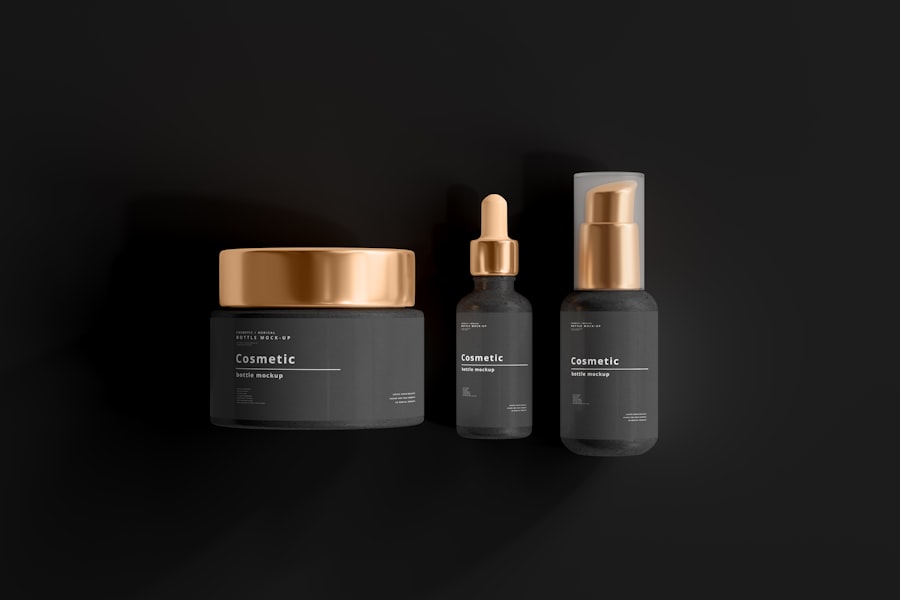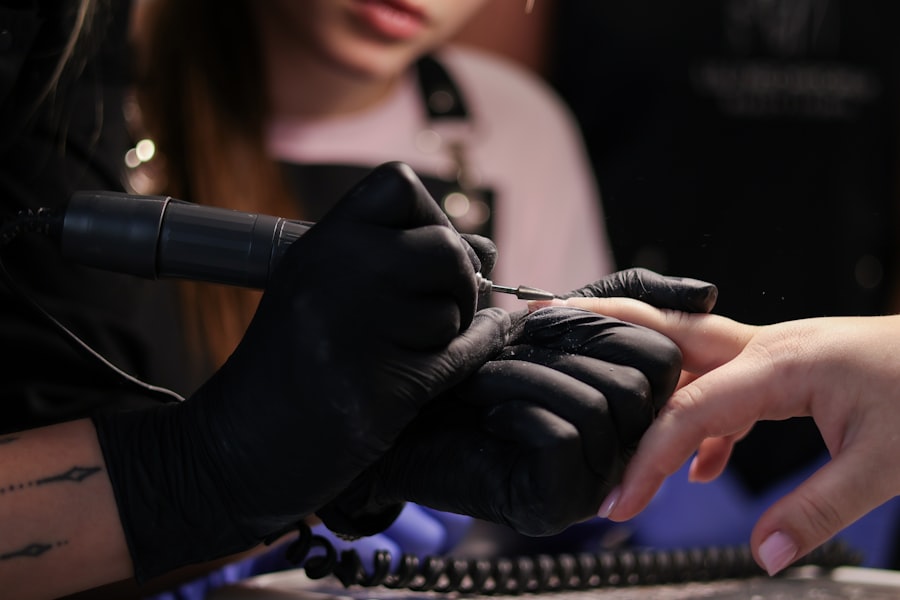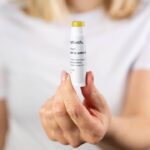When you undergo a procedure that affects your skin, whether it’s a minor cosmetic treatment or a more invasive surgery, understanding the healing process is crucial. You may find yourself experiencing a range of emotions as you navigate through the various stages of recovery. Initially, you might feel excitement about the results, but this can quickly be overshadowed by anxiety regarding how your skin will heal.
It’s important to remember that healing is not just a physical process; it’s also emotional. You may need to give yourself grace and patience as your body works to repair itself. The healing process typically unfolds in several stages, each with its own set of characteristics.
In the first few days, you might notice swelling, redness, or even some discomfort in the treated area. This is your body’s natural response to injury, as it sends blood and nutrients to the site to promote healing. As days turn into weeks, you may observe changes in the appearance of your skin, such as peeling or flaking.
Understanding these stages can help you manage your expectations and prepare for what lies ahead. By being informed, you can better appreciate the journey your skin is taking toward recovery.
Key Takeaways
- Understanding the Healing Process:
- The healing process after a skincare treatment is crucial for achieving desired results.
- It involves the body’s natural response to injury and can vary depending on the type of treatment.
- Proper Skincare Routine:
- Following a proper skincare routine is essential for promoting healing and maintaining results.
- This routine may include gentle cleansing, application of prescribed products, and avoiding harsh ingredients.
- Avoiding Sun Exposure:
- Sun exposure can hinder the healing process and lead to complications such as hyperpigmentation.
- It is important to protect the skin from the sun by using sunscreen and wearing protective clothing.
- Managing Discomfort and Irritation:
- It is common to experience discomfort and irritation after certain skincare treatments.
- Managing these symptoms may involve using prescribed medications and following post-treatment instructions.
- Hydrating and Moisturizing:
- Keeping the skin hydrated and moisturized is essential for promoting healing and maintaining skin health.
- Using gentle and non-comedogenic products can help prevent dryness and irritation.
- Watching for Complications:
- It is important to monitor the skin for any signs of complications such as infection or excessive inflammation.
- Seeking prompt medical attention for any concerning symptoms is crucial for preventing further issues.
- Following Up with Your Provider:
- Regular follow-up appointments with your skincare provider are important for monitoring progress and addressing any concerns.
- Your provider can offer guidance on long-term maintenance and adjustments to your skincare routine.
- Long-Term Maintenance:
- Establishing a long-term maintenance plan with your provider can help sustain the results of your skincare treatment.
- This may involve periodic treatments, ongoing skincare regimen, and lifestyle adjustments.
Proper Skincare Routine
Gentle Cleansing: The First Step
You may want to start with gentle cleansing to remove impurities without irritating your skin further. Opt for a mild, fragrance-free cleanser that won’t strip your skin of its natural oils.
Toning, Moisturizing, and Exfoliating
Cleansing should be done twice daily, but be cautious not to overdo it; excessive washing can lead to dryness and irritation. After cleansing, consider applying a soothing toner or serum that contains calming ingredients like aloe vera or chamomile to help reduce inflammation. Moisturizing is another critical component of your skincare routine during this time. You might find that your skin feels tight or dry as it heals, so using a rich moisturizer can help restore hydration and create a protective barrier. Look for products that are non-comedogenic and free from harsh chemicals, as these can exacerbate irritation. Additionally, incorporating a gentle exfoliant once your skin has healed sufficiently can help remove dead skin cells and promote a smoother texture.
Consistency is Key
Remember, consistency is key; sticking to your routine will yield the best results.
Avoiding Sun Exposure

One of the most important aspects of caring for your healing skin is avoiding sun exposure. Ultraviolet (UV) rays can be particularly damaging during the recovery phase, leading to complications such as hyperpigmentation or prolonged healing times. You may want to take extra precautions by wearing protective clothing, such as wide-brimmed hats and long sleeves, whenever you step outside.
Skin Cancer Foundation Additionally, seeking shade during peak sun hours can significantly reduce your risk of sun damage. Sunscreen should become your best friend during this period. Choose a broad-spectrum sunscreen with an SPF of at least 30 and apply it generously to all exposed areas of your skin, even on cloudy days.
Reapplying every two hours is essential, especially if you’re sweating or swimming. By prioritizing sun protection, you not only safeguard your healing skin but also set the stage for long-term skin health. Remember that taking these precautions now can prevent complications down the line and help you achieve the best possible results from your procedure.
Managing Discomfort and Irritation
| Technique | Effectiveness | Notes |
|---|---|---|
| Deep Breathing | High | Helps to relax and reduce tension |
| Progressive Muscle Relaxation | Medium | Can help to release physical tension |
| Distraction | Low | May provide temporary relief but doesn’t address the root cause |
As you navigate through the healing process, managing discomfort and irritation is vital for your overall well-being. You may experience varying levels of pain or sensitivity in the treated area, which can be uncomfortable. Over-the-counter pain relievers like ibuprofen or acetaminophen can help alleviate some of this discomfort, but always consult with your healthcare provider before taking any medication.
They can provide personalized recommendations based on your specific situation.
Cold compresses can be particularly effective in reducing swelling and providing relief from irritation.
Simply wrap ice in a clean cloth and gently apply it to the affected area for short intervals. You might also consider using calming topical treatments that contain ingredients like calendula or witch hazel, which can help soothe inflamed skin. By actively managing discomfort, you’ll be better equipped to focus on healing and enjoying the results of your procedure.
Hydrating and Moisturizing
Hydration plays a crucial role in the healing process, both internally and externally. You may find that drinking plenty of water helps keep your skin hydrated from within, promoting optimal healing conditions. Aim for at least eight glasses of water a day, adjusting based on your activity level and climate.
Staying hydrated not only benefits your skin but also supports overall bodily functions, which is essential during recovery. Externally, moisturizing is equally important. As mentioned earlier, using a high-quality moisturizer can help lock in moisture and create a protective barrier against environmental stressors.
Look for products that contain hyaluronic acid or glycerin, as these ingredients are known for their hydrating properties. Applying moisturizer regularly will help prevent dryness and flakiness while promoting a smoother appearance as your skin heals. By prioritizing hydration in both forms, you’ll set yourself up for a more comfortable recovery experience.
Watching for Complications

Watch for Unusual Symptoms
While most healing processes go smoothly, it’s essential to remain vigilant for any signs of complications that may arise. You should keep an eye out for unusual symptoms such as excessive redness, increased swelling, or discharge from the treated area. These could indicate an infection or other issues that require prompt attention from your healthcare provider.
Trust Your Instincts
Trusting your instincts is crucial; if something doesn’t feel right, don’t hesitate to reach out for guidance. Additionally, monitoring your emotional well-being during this time is just as important as watching for physical complications.
Emotional Well-being Matters
The healing process can be emotionally taxing, and feelings of frustration or disappointment may arise if things don’t progress as expected. It’s perfectly normal to have ups and downs during recovery; however, if you find yourself feeling persistently anxious or depressed, consider seeking support from friends, family, or even a mental health professional.
A Holistic Approach to Healing
By addressing both physical and emotional aspects of healing, you’ll be better equipped to navigate any challenges that come your way.
Following Up with Your Provider
Regular follow-up appointments with your healthcare provider are essential for ensuring that your healing process is on track.
During these appointments, don’t hesitate to ask questions about what to expect moving forward or any specific care instructions tailored to your situation.
Your provider may also offer additional treatments or recommendations based on how well you’re healing. For instance, they might suggest specific products or procedures that can enhance your results or expedite recovery. Keeping an open line of communication with your provider will empower you to take an active role in your healing journey and ensure that you’re doing everything possible to achieve optimal results.
Long-Term Maintenance
Once you’ve successfully navigated the initial healing process, it’s time to focus on long-term maintenance for your skin. Establishing a consistent skincare routine will help preserve the results of your procedure while promoting overall skin health. You may want to incorporate products that target specific concerns such as aging or pigmentation to maintain a youthful appearance.
Additionally, regular visits to a dermatologist can be beneficial for ongoing skin assessments and treatments tailored to your needs. They can provide guidance on advanced skincare options like chemical peels or laser treatments that can further enhance your results over time. By prioritizing long-term maintenance and staying proactive about your skincare regimen, you’ll not only enjoy the benefits of your initial procedure but also invest in the health and vitality of your skin for years to come.
In conclusion, understanding the healing process and implementing proper care strategies are vital steps toward achieving optimal results after any skin treatment. By following these guidelines—establishing a skincare routine, avoiding sun exposure, managing discomfort, hydrating adequately, watching for complications, maintaining communication with your provider, and focusing on long-term maintenance—you’ll set yourself up for success on this journey toward healthier skin. Remember that patience and diligence are key; with time and care, you’ll be able to enjoy the fruits of your labor and feel confident in your skin once again.
After undergoing hair removal laser treatment, it is crucial to follow proper aftercare instructions to ensure optimal results and minimize any potential side effects. One helpful resource for learning more about hair removal laser aftercare is the blog section of In Laser Hair Removal’s website. In one of their articles, they provide detailed information on how to care for your skin post-treatment to promote healing and reduce the risk of complications. To read more about this topic, visit their blog here.
FAQs
What is hair removal laser aftercare?
Hair removal laser aftercare refers to the steps and precautions that should be taken after undergoing a laser hair removal treatment. This includes caring for the treated area to ensure proper healing and to minimize any potential side effects.
What are the common aftercare instructions for hair removal laser treatment?
Common aftercare instructions for hair removal laser treatment may include avoiding sun exposure, using gentle skincare products, avoiding hot showers and saunas, and avoiding activities that may cause excessive sweating.
How long does it take for the skin to heal after a hair removal laser treatment?
The healing time after a hair removal laser treatment can vary depending on the individual and the specific treatment area. In general, the skin may take a few days to a couple of weeks to fully heal.
What are the potential side effects of hair removal laser treatment?
Potential side effects of hair removal laser treatment may include redness, swelling, itching, and temporary pigment changes in the treated area. It is important to follow the aftercare instructions to minimize these side effects.
Can I apply makeup or skincare products after a hair removal laser treatment?
It is recommended to avoid applying makeup or using skincare products with harsh ingredients immediately after a hair removal laser treatment. It is best to use gentle and non-irritating products during the healing process.
How can I soothe any discomfort or irritation after a hair removal laser treatment?
To soothe discomfort or irritation after a hair removal laser treatment, you can apply aloe vera gel, cool compresses, or over-the-counter hydrocortisone cream as recommended by your healthcare provider. It is important to avoid scratching or picking at the treated area.





